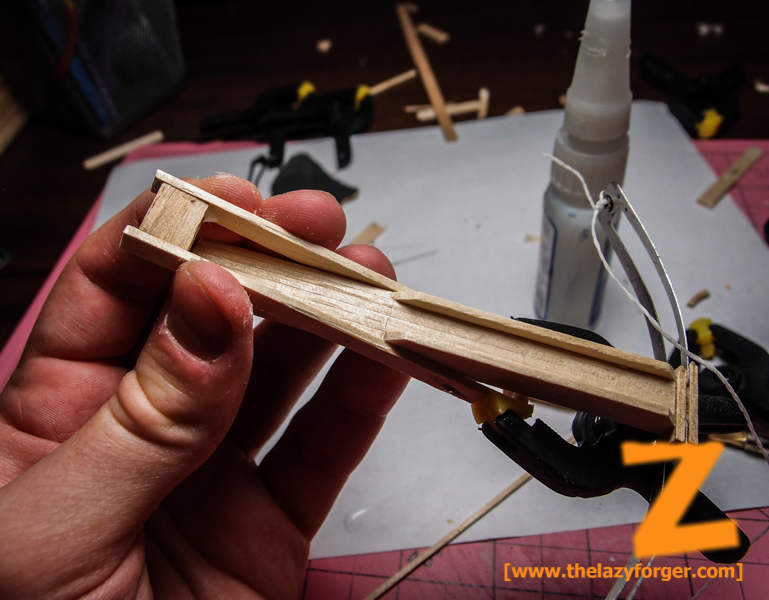

VARIANT: DERRO SAVANT Derro savants have an affinity for. Ranged Weapon Attack: +4 to hit, range 40/160 ft., one target. This weapon is similar to a light crossbow. A CHINESE REPEATING CROSSBOW CHU KO NU Upcoming SalesView All Sort by: Best Match Related Searches. If the file has been modified from its original state, some details such as the timestamp may not fully reflect those of the original file. The derro also use a light repeating crossbow fitted with a cartridge that can hold up to six crossbow bolts.

REPEATING CROSSBOW CHINESE ARCHIVE
The crossbow was made for the Discovery Channel-program "Weapon Masters", and was based on the Cho-ko-nu.This file contains additional information such as Exif metadata which may have been added by the digital camera, scanner, or software program used to create or digitize it. Repeating Crossbow Plans Addeddate 23:00:39 Identifier RepeatingCrossbowPlans Identifier-ark ark:/13960/t6449pg8w Ocr ABBYY FineReader 11.0 Pages 4 Ppi 600 Scanner Internet Archive Python library 0.9.1. In 2007, Chad Houseknecht made a modern-day repeating crossbow. The Chinese Repeating Crossbow was weaker in draw strength compared to other crossbows, so the arrows were often dipped in poison to cause death from even mild wounds. The machine features the earliest recorded chain drive in the history of technology. Two flat-linked chains were connected to a windlass, which by winding back and forth would automatically fire the machine's arrows until its magazine was empty. This siege engine, a repeating ballista, was called a Polybolos and was reputedly invented by Dionysius of Alexandria in the 3rd century BC. In Korean it was called sunogung (Hangul: 수노궁 Hanja: 手弩弓).Ī more complex device was described in the works of the Greek engineer Philon of Byzantium. Repeating crossbows, called zhuge nu in Chinese, could shoot multiple bolts before needing to be reloaded.

The repeating crossbow was introduced into Korea by King Sejong (1418–1450), who during a trip to China saw the weapon and was impressed by its mechanism. The basic construction of this weapon has remained very much unchanged since its invention, making it one of the longest-lived mechanical weapons. The repeating crossbow saw its last serious action as late as the China-Japan war of 1894–1895, where photographs show repeating crossbows as common weapons among Qing Dynasty troops. Non-recurved versions of the repeating crossbow were often used for home defense. The Chinese repeating crossbow had a maximum range of 120 meters, with an effective range of 60 meters, far less than that of a non-repeating crossbow. The recurved repeating crossbow is generally still weaker than the regular recurved crossbow, and was mainly used for sieges or behind shield cover. The weapon used by the ancient militaries was developed into a composite-recurve variety for more power. Such action could fire 10 bolts in 15 seconds, after which the magazine would be reloaded. The bolts of one magazine are fired and reloaded by simply pushing and pulling the lever back and forth.

Other repeating crossbows fired as many as 10 bolts before exhausting the magazine. The arrow is rather a disposable product. Zhuge Liang improved the design of the repeating crossbow, and made a version which shot two to three bolts at once and was used in massed formations. The purpose of these crossbows is to fire a single shot from ambush (as in hunting crossbows, e.g. Also known as the lián nǔ (simplified Chinese: 连弩 traditional Chinese: 連弩 literally "continuous crossbow"), the invention is commonly attributed to the strategist Zhuge Liang (181–234 AD) of the Three Kingdoms period, but those found in Tomb 47 at Qinjiazui, Hubei Province have been dated to the 4th century BC. The bow string consisted of animal sinew twisted into a cord of suitable strength. Conventional crossbows, invented in China in the seventh century BCE, required far less training to master than standard bows and delivered immense armor-piercing power. The Chinese repeating crossbow (Chinese: 諸葛弩 pinyin: zhūgě nǔ Wade–Giles: chu-ke nu literally "Zhuge crossbow" sometimes romanized as "chu-ko-nu") is a device with a simple design. The Chinese chukonua repeating crossbowwas a magazine-fed semiautomatic weapon, but one predating its firearm equivalents by millennia.


 0 kommentar(er)
0 kommentar(er)
